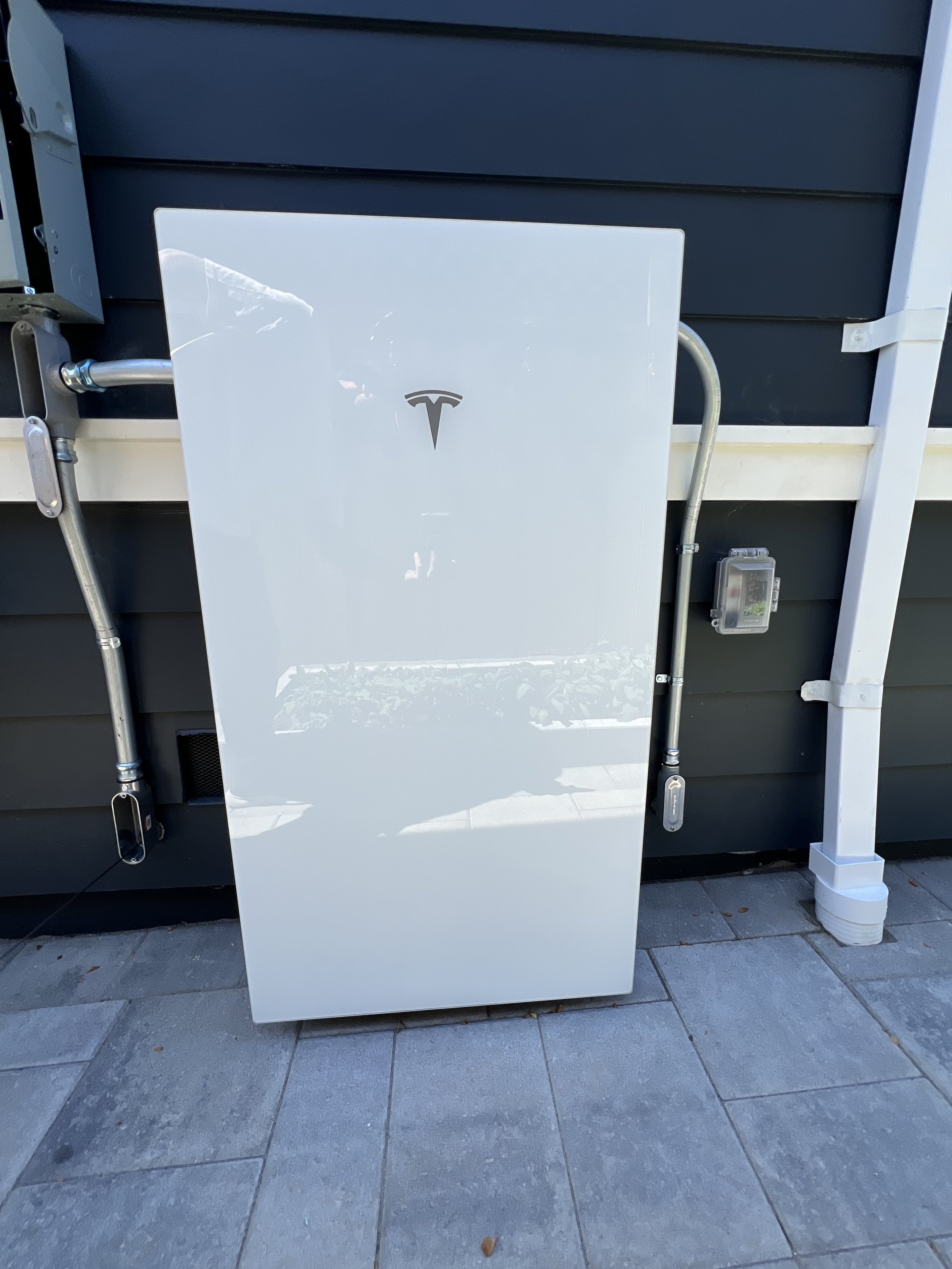When considering a home energy storage solution like the Tesla Powerwall 3, one of the most common questions homeowners have is how many circuits it can back up. After all, the goal of investing in solar power and storage is to keep essential appliances running during power outages or when energy prices surge. But how do you determine the number of circuits that can be supported by a single Powerwall 3?
In this blog post, we’ll explore the key factors that affect how many circuits you can back up with the Powerwall 3, and how to calculate your home’s energy backup needs.
TESLA Powerwall 3 installation
The Powerwall 3: Key Features at a Glance
To understand how many circuits a Powerwall 3 can support, it’s important to first review its core specifications:
Energy Capacity: 13.5 kWh (13,500 watt-hours)
Continuous Output: 11,500W
Peak Output: Up to 22,000W for short bursts (1 second)
Load Starting Capability: Can handle up to 150 amps for brief periods (1 second)
The energy capacity (13.5 kWh) tells you how much energy the Powerwall 3 can store and provide, while the continuous output (11,500W) indicates how much power it can supply to your home at any given moment. The load starting capability is particularly important for appliances like air conditioners or refrigerators, which require a higher surge of energy when they start up.
How Does Powerwall 3 Backup Work?
To figure out how many circuits can be backed up, we need to consider several factors:
Energy Consumption of Your Home’s Circuits
The total number of circuits a Powerwall 3 can back up depends on the energy consumption of those circuits. A typical home might have a range of circuits, including:Essential circuits: These might include lights, refrigerators, HVAC systems, and medical equipment.
Non-essential circuits: Things like TVs, small appliances, and other non-critical devices.
Each circuit will consume a certain amount of power, usually measured in watts (W) or kilowatts (kW). For example:
A refrigerator might consume 100-200 watts on average, but it will require a surge of power when starting up.
An air conditioning unit could consume around 1,000 watts or more depending on the size.
Total Power Demand and Powerwall 3’s Limits
The Powerwall 3 can provide a continuous output of up to 11,500W. This means that the total power demand from the circuits you wish to back up should not exceed this limit at any given moment. For example:If you want to back up a refrigerator (200W), lights (100W), and a few small appliances (500W), the total continuous demand would be around 800W, well within the Powerwall 3’s capacity.
However, if you're trying to back up high-demand circuits like an air conditioner or large electric oven, you’ll hit the limit much sooner.
Energy Duration
Another key factor is the duration you want to back up your circuits. While a Powerwall 3 can handle significant loads, it only has a total energy storage capacity of 13.5 kWh. For instance:If your total load is 1,000 watts (1 kW), the Powerwall could theoretically back up these circuits for 13.5 hours (13.5 kWh / 1 kW = 13.5 hours).
If your total load is 3,000 watts (3 kW), the backup duration would drop to 4.5 hours.
Therefore, the more circuits you wish to back up, the quicker the energy will be consumed. This is why multiple Powerwalls might be required for homes with high energy demand or for longer backup durations.
How Many Circuits Can Be Backed Up with One Powerwall 3?
To provide a practical answer, let’s break it down:
Basic Setup (Low Power Load): If you’re only backing up a few basic circuits like lights, a refrigerator, and a couple of small appliances, a single Powerwall 3 may be sufficient. For example, with a load of 800 watts, it could run for up to 16 hours (13.5 kWh / 800W).
Moderate Power Load: For more demanding circuits—like a refrigerator, a well-pump, and HVAC system—a Powerwall 3 might be able to support these for a few hours, but it would depend on the exact load. For instance, if your backup load is 3,000 watts, expect around 4.5 hours of backup time.
High Power Load: If you’re trying to back up high-draw circuits like an electric oven, large air conditioning units, or electric heaters, the number of circuits you can back up will be very limited by the Powerwall’s 11,500W continuous output.
In short, a Powerwall 3 can support 1 to 3 typical home circuits, depending on your household’s power usage. But the more circuits you want to back up, the more critical it is to calculate the total power demand to ensure that the backup system is adequate for your needs.
When Do You Need More Than One Powerwall?
If your home’s energy needs exceed the capabilities of a single Powerwall, you can add additional Powerwalls to expand your backup capacity. Tesla allows you to install up to 10 Powerwalls in a single home system, which can cover even the highest power demand for long periods.
For larger homes or those with more demanding backup needs, installing multiple Powerwalls will increase both the total energy storage (kWh) and the number of circuits you can back up. Tesla’s advanced energy management system also ensures that the system will seamlessly switch between grid and battery power as needed, without disruption.
Conclusion
The number of circuits a single Powerwall 3 can back up depends primarily on the total power demand of your home’s circuits and how long you want to maintain power. While the Powerwall 3’s 11,500W continuous output and 13.5 kWh storage capacity are powerful, they may not be enough for large homes with high energy needs. For most average homes, however, a Powerwall 3 will easily back up a few key circuits for several hours.
If you need more coverage, you can always expand your system with additional Powerwalls. The ideal solution depends on your unique energy usage and backup priorities.


